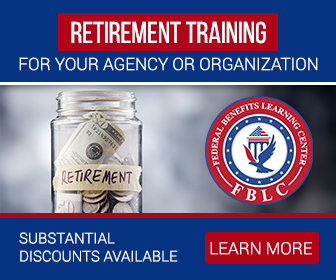Key Takeaways:
-
Federal survivor benefits ensure financial support and healthcare continuity for eligible family members, offering stability during difficult times.
-
Understanding eligibility and the claims process can help you secure timely benefits for your family.
The Lifeline of Federal Survivor Benefits
Losing a loved one is emotionally devastating, and the financial aftermath can compound the stress. Fortunately, as part of the federal workforce, you have access to comprehensive survivor benefits designed to provide stability to your family. These benefits include monthly annuities, life insurance payouts, and healthcare coverage, ensuring that your family remains financially secure even in your absence.
- Also Read: Are You Eligible for the Federal Employee Retirement System (FERS)? Find Out Here
- Also Read: Why TSP Withdrawal Options Might Be More Flexible Than You Think for Federal Retirees
- Also Read: The Top Federal Employee Benefits You Should Be Tapping Into Right Now
Understanding Eligibility Requirements
Before your family can access survivor benefits, they must meet specific eligibility criteria. Spouses, children, and in some cases, former spouses can qualify, depending on your employment status and the retirement system you’re part of.
Spouse Eligibility
Your surviving spouse is typically the primary beneficiary of federal survivor benefits. For eligibility, they must have been married to you for at least nine months before your death. This requirement is waived if your death was accidental.
-
FERS: Your spouse may receive a monthly survivor annuity equal to 50% of your unreduced annuity.
-
CSRS: The survivor annuity can amount to up to 55% of your unreduced annuity.
Child Eligibility
Children under age 18 (or under 22 if full-time students) are eligible for survivor benefits. In cases where children have disabilities that began before age 18, benefits may continue for life.
-
Each eligible child can receive a monthly benefit, subject to combined family maximums.
-
The payments help cover educational and basic living expenses.
Federal Employee’s Group Life Insurance (FEGLI)
FEGLI provides additional financial support through life insurance benefits. Upon your passing, designated beneficiaries receive a tax-free payout. Here’s what you need to know:
-
Basic Coverage: Automatically included unless you opt out, this provides a lump sum equal to your annual salary rounded up to the next $1,000, plus $2,000.
-
Optional Coverage: You can add supplemental coverage, but higher premiums apply as you age.
Beneficiaries should file claims promptly to avoid delays in receiving the payout. Keeping your beneficiary designations up to date ensures the funds go to the intended recipients.
Health Insurance Continuation
Healthcare is another critical component of survivor benefits. The Federal Employees Health Benefits (FEHB) program allows eligible family members to continue their coverage. Here’s how it works:
-
Spouses: They can maintain FEHB coverage indefinitely as long as they receive a survivor annuity.
-
Children: They retain coverage until age 26, or longer if disabled.
It’s essential to keep Medicare enrollment in mind for spouses aged 65 or older, as FEHB coordinates with Medicare to reduce out-of-pocket costs. Note that former spouses may qualify for coverage under specific circumstances, such as court-ordered benefits.
Steps to Claim Survivor Benefits
Navigating the claims process can feel overwhelming, but breaking it down into steps helps streamline the experience. Here’s what to do:
-
Notify the Agency: Inform your late loved one’s employing agency immediately. They’ll provide guidance on next steps.
-
Gather Documentation: Collect the required documents, including the death certificate, marriage certificate, and any applicable divorce decrees.
-
Submit Claims: File the appropriate forms through the Office of Personnel Management (OPM). The main forms include:
-
FERS: Standard Form 3104 (Application for Death Benefits)
-
CSRS: Standard Form 2800 (Application for Death Benefits)
-
-
Track the Process: OPM may take several months to process claims. Ensure you’ve provided all necessary documentation to avoid delays.
Survivor Benefit Calculations
The amount your family receives depends on your retirement system, years of service, and the type of benefit elected. Let’s break it down:
FERS Survivor Annuities
Under FERS, survivor annuities are calculated based on your High-3 average salary (the highest average annual salary over three consecutive years). Here’s a typical breakdown:
-
Spouse Annuity: 50% of your unreduced pension.
-
Child Benefits: A fixed amount per child, adjusted annually for inflation.
CSRS Survivor Annuities
CSRS offers more generous benefits than FERS but covers fewer employees. The annuity formula generally provides up to 55% of your pension to your surviving spouse.
Special Provisions for Law Enforcement Officers (LEOs)
LEOs, firefighters, and air traffic controllers often receive enhanced survivor benefits due to their unique retirement systems. If you fall into this category, consult your agency’s human resources office to understand the specifics.
Planning Ahead: What You Can Do Now
Preparation is key to ensuring your family receives full benefits. Here’s how to set them up for success:
-
Update Beneficiaries: Regularly review your beneficiary designations for FEGLI, TSP, and other benefits.
-
Elect Survivor Annuities: At retirement, you must choose whether to provide a survivor annuity. While this reduces your monthly pension, it secures long-term income for your family.
-
Communicate Your Wishes: Discuss your plans with your loved ones to ensure they’re aware of what’s available and how to claim it.
-
Keep Records Accessible: Store essential documents in a secure but accessible location.
Taxes and Survivor Benefits
Survivor benefits, while invaluable, may be subject to taxes. Here’s a quick overview:
-
Annuities: Survivor annuities are generally taxable as income.
-
FEGLI Payouts: Life insurance benefits are tax-free.
-
TSP Inheritance: Funds from the Thrift Savings Plan (TSP) are taxable unless rolled into another retirement account.
Consulting a tax advisor helps your family navigate these complexities and minimize their tax burden.
Common Challenges and How to Overcome Them
Claiming federal survivor benefits can be complex, and families often encounter obstacles. Common issues include:
-
Incomplete Documentation: Missing forms or incorrect information can delay payments.
-
Outdated Beneficiary Designations: Ensure designations are current to avoid legal disputes.
-
Understanding Options: The variety of benefits can feel overwhelming. Don’t hesitate to seek guidance from HR or legal professionals.
Proactively addressing these challenges can save your family unnecessary stress during a difficult time.
Why Survivor Benefits Matter
Survivor benefits offer more than just financial stability—they’re a lifeline that helps your family maintain their quality of life. From covering daily expenses to ensuring continued healthcare, these benefits provide peace of mind for you and your loved ones.
Planning ahead and understanding the nuances of your federal benefits ensures that your family is well cared for, even after you’re gone. By taking the time now to organize your plans, you’re making a lasting impact on their future.
Providing Security When It’s Needed Most
Federal survivor benefits are a cornerstone of financial stability for families navigating loss. By understanding the process, eligibility, and available options, you empower your loved ones to access the support they need without unnecessary complications. Make today the day you secure your family’s future.









